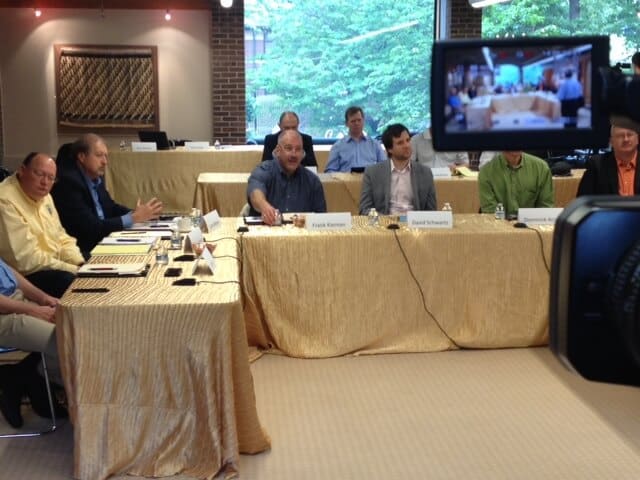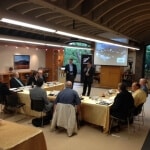By Darek Wieczorek, Principal Consultant, Tait Communications.
 The second P25 Best Practices Roundtable took place at the New Zealand Embassy, in Washington DC, on May 23rd. We had an equally diverse group of participants as in the first P25 best practices roundtable. The one thing they all had in common was a truly impressive level of expertise in Public Safety communications.
The second P25 Best Practices Roundtable took place at the New Zealand Embassy, in Washington DC, on May 23rd. We had an equally diverse group of participants as in the first P25 best practices roundtable. The one thing they all had in common was a truly impressive level of expertise in Public Safety communications.
Based on the experience gained in the first roundtable, I was able to zero-in on some specific topics. Because system procurement took the lion’s share of the first session, this time we started with security issues, followed by network management, then procurement. This allowed us to drill deeper into some topics to gain confirmation of earlier findings, while also revealing some new insights.
The highlights
Security
The number-one concern is not cyber-security, but physical security of systems. The main problems are common vandalism and theft, especially of any copper elements. Again, none of the participants had ever experienced any malicious cyber-attacks on their network—but that doesn’t mean these should be underestimated or ignored.
Among cyber-security concerns, the participants were challenged by the ever-increasing difficulty in separating their networks from the outside world. This pertains both to physical separation (Public Safety equipment sharing space with equipment belonging to other government or commercial entities) and to data separation. On the network side, sharing the links between sites with other users is very common. On the data transmission side, almost all Public Safety agencies now rely on commercial carriers and commercial devices. Will FirstNet address these concerns?
Network management
We had a considerably longer discussion on these topics in the second session, and we gained a better understanding as a result. Generally, opinions were divided. For example, some of the participants were unconcerned about network monitoring, basically relying on trouble reports from their system users. Others had rigorous programs in place, including weekly physical check-ups at all of the equipment sites. At the end of the discussion, the recommendation was for all networks to be monitored, preferably not by dispatch personnel—as it might interfere with their primary duties—but by other local government agencies, such as state-wide system operators.
It was a similar situation when we discussed asset tracking. While the majority of the participants didn’t use any such tools, those who did were enthusiastic and convinced of their value in areas such as tracking faulty units, optimizing purchase of replacement equipment, or even detecting recurring thefts.
System procurement
Most of this discussion confirmed the earlier findings. For example, use of consultants was widely recommended. As in the first session, the most common failure was due to power issues. No concern was expressed over redundant controllers of any kind. We also heard some innovative ideas, including using logging recorders to estimate traffic loading, where other sources of traffic records are not available (simple conventional systems, for example).
For me, the most interesting discovery of the day was when I posed the question of system upgrades: “migration or forklift?” The answer, as expected, was “migration”. But the interesting part was the expected level of interoperability between the old and the new systems during migration: only very basic. The professionals in charge of radio systems expect only basic patching, either pre-set or on-demand. There was no expectation for any higher level of control-signal compatibility or any higher level functionality being transparent—just basic audio and push-to-talk control.
- Delegates at the P25 Best Practices Roundtable organized by Tait
- Delegates at the P25 Best Practices Roundtable organized by Tait
- New Zealand Embassy – the venue for the second P25 Best Practices Roundtable
- Delegates take in the sights in Washington D.C. prior to the P25 Best Practices Roundtable
This was the second of three sessions, and I’m looking forward to the next one.
Stay tuned—we’ll be sharing much more information and insights from the roundtable discussions over the coming weeks.
Join the discussion in the P25 Best Practices LinkedIn Group







